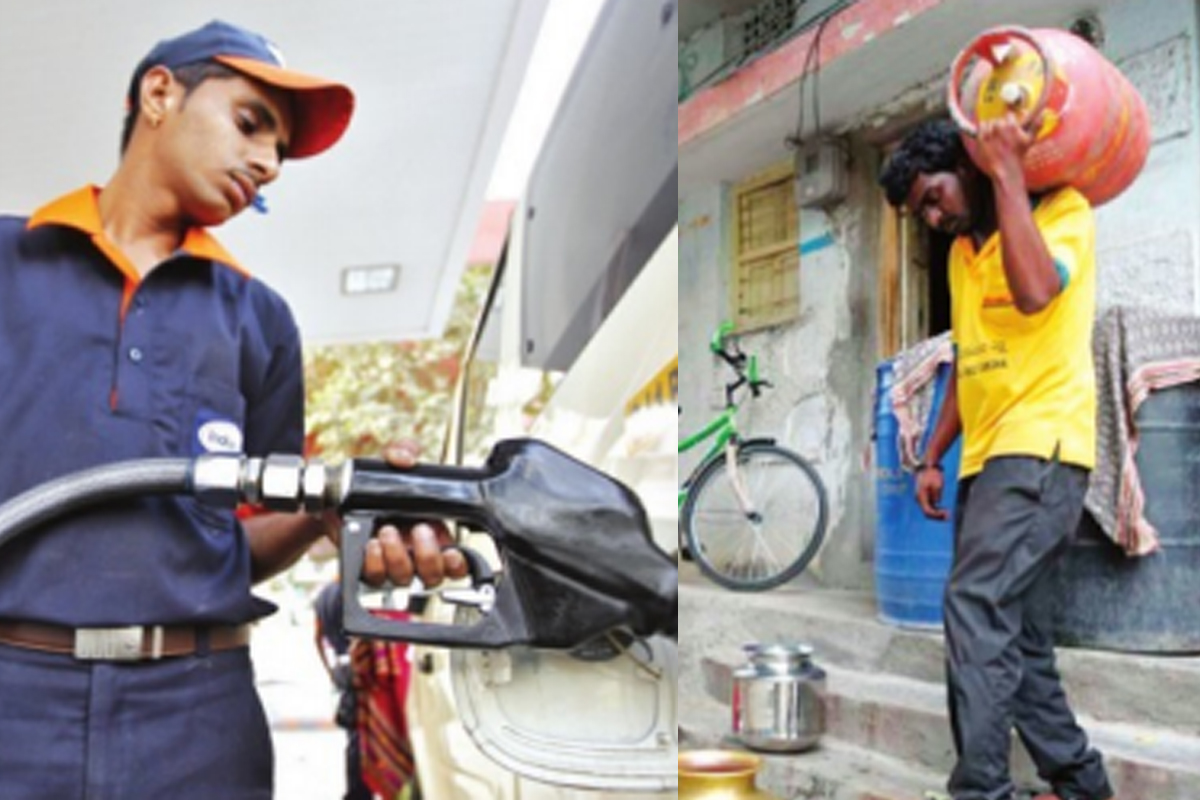Massive fire breaks out at Mahakumbh; none injured, CM on the spot
A massive fire broke out in pandals located in Sector 19 under the Shastri Bridge at the Mahakumbh venue in Prayagraj on Sunday.
The consumption of oil and natural gas across the world has given rise to unique scenarios in both international politics and national economics.

PHOTO: STATESMAN NEWS SERVICE
We cannot ignore the use of oil which, in its omnipotent role, influences every household and country. The major supplier of the item has been the Organization of the Petroleum Exporting Countries, or OPEC, which was founded in 1960.
This organisation, with its headquarters in Vienna, comprises countries, who allied to regulate the supply and price of oil. By volume these countries are the largest holders of crude oil and natural gas reserves. Oil, as a commodity, is deeply integral to a nation’s endeavours and the influence it commands is amazing; it governs the economy of a country and in totality, it is virtually impossible to imagine the absence of oil for even one day.
Advertisement
Citizens of countries presume that governments operate the necessary checks and balances, so its supply and cost are regulated. The amazing fact of the matter is that oil supply to a country does not translate into a simple equation of supply and use.
Advertisement
Consumers must accept a price variation, which may be imposed in a sudden or unpredictable manner. For example, from 2 May this year, India has not been able to import oil from Iran; a country that had become the second largest supplier of oil to us.
Washington has alleged that Tehran is a state sponsor of terrorism, so the US have imposed sanctions on countries dealing with Iran. Will a change in the supplier of oil to India increase the price? There can also be different circumstances where the cost of oil is impacted because its consumption is used in a sector which involves billions of dollars. Let us focus our kaleidoscope on the US.
They pay an astronomical amount to protect certain countries who supply oil. Tom Di Christopher is an award-winning journalist who covers energy for CNBC and writes that the US spends $ 81 billion a year to protect global oil supplies, as per his study of related estimates.
An analysis shows that this protection enables the US to keep fossil fuels flowing to its gas stations. However, the country’s leadership articulates concern that some West Asian countries are increasing crude oil prices, also impacting the US, which brings forth a question from an American viewpoint — Is this a just policy in view of the US protecting them? Former Commander of US Transportation Command, General Duncan McNabb says, “If we can reduce our dependence on oil, we could reduce our presence in the Gulf and use the funds for our other military priorities like cyber security or hypersonic weapons.”
A hypersonic weapon is a US military effort of a precision guided conventional weapon in an airstrike anywhere in the world, in one hour. McNabb feels the enormity of this expenditure is a metaphorical red herring to other endeavours of the US. President Trump told the 15 nation oil producing group, OPEC, which includes Saudi Arabia and other West Asian countries, that they are safe because of protection from the US.
To turn our focus on India, Wood Mackenzie in Edinburgh, UK, is a research and consultancy group, which reports that India’s oil demand and growth recovered significantly in 2018. The US Energy Information Administration states that India is currently ranked behind the US and China as the third largest consumer of oil. Mackenzie report that diesel is the most consumed fuel in India and consumption is expected to increase by 6.4 per cent in 2019, which is attributed to buoyant sales of commercial vehicles.
Mackenzie also state that due to the recent General Election, there has been increased travel for campaigning activities and implementation of infrastructure projects. This will of course entail an inevitable increase of fuel, which will be reflected in the first half of 2019. LPG demand growth in 2019 is expected to remain robust at five per cent, equivalent to 40,000 barrels a day, although this projected figure is lower than 2018 when 50,000 barrels a day was reflected. But this year’s consumption is likely to surge due to the Ujjwala scheme, which will promote new LPG customers.
The scheme will encourage clean cooking fuel in rural areas. A huge untapped market of about 50 million households remain deprived of LPG and the government has begun to explore this segment. The burgeoning population of India will undoubtedly impact the consumption of oil in the country and logically will also have a cascading effect on consumption of other essentials; our population, as a figure, will therefore have to be factored in tandem with the country’s economic calculations and predictions.
Advertisement